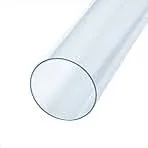Dec . 03, 2024 21:45 Back to list
Exploring the Benefits of HDPE Cutting Boards for Kitchen Use and Food Safety
Understanding HDPE Cutting Boards The Material Behind the Kitchen Essential
In the world of kitchen essentials, cutting boards play a pivotal role in food preparation. Among various materials used for crafting cutting boards, High-Density Polyethylene (HDPE) has gained significant popularity. This article delves into the characteristics, advantages, and uses of HDPE cutting boards, demonstrating why they are a preferred choice in both home and professional kitchens.
What is HDPE?
High-Density Polyethylene (HDPE) is a thermoplastic polymer made from petroleum. This material is well-known for its high strength-to-density ratio and impressive durability. HDPE is often used in a myriad of products, from containers and bottles to piping and geomembranes. In the context of cutting boards, its utility as a food-safe surface makes it an ideal choice. HDPE is commonly identified by a recycling code of 2, indicating its safety for food contact according to various health and safety standards.
Advantages of HDPE Cutting Boards
1. Non-Porous Surface One of the most significant advantages of HDPE cutting boards is their non-porous surface. This feature prevents the absorption of liquids and bacteria, making them a hygienic choice for food preparation. Unlike wooden boards, which can harbor bacteria in their porous fibers, HDPE boards can be thoroughly cleaned and sanitized.
2. Durability HDPE cutting boards are remarkably durable and can withstand significant wear and tear, making them suitable for heavy-use environments such as commercial kitchens. They are resistant to cracking, splitting, and warping, ensuring a long lifespan with proper care.
3. Knife-Friendly Despite being durable, HDPE cutting boards are gentle on knives. They do not dull blades as quickly as harder materials, such as glass or marble, which can be detrimental to the lifespan of kitchen utensils. The slightly soft surface of HDPE allows knives to glide over without causing damage.
hdpe cutting board material

4. Temperature Resistance HDPE can tolerate a wide range of temperatures, making it suitable for both hot and cold food items. Furthermore, many HDPE cutting boards are dishwasher safe, making cleanup easy and efficient without compromising the material's integrity.
5. Eco-Friendly Options As sustainability becomes more important to consumers, it is worth noting that some manufacturers produce HDPE cutting boards from recycled materials. Choosing these options can contribute to reducing plastic waste and promoting a circular economy.
6. Variety of Sizes and Colors HDPE cutting boards are available in various sizes and colors, allowing users to designate specific boards for different food types, such as vegetables, meats, and seafood. This practice not only promotes better hygiene but also enhances food preparation efficiency.
Caring for Your HDPE Cutting Board
To ensure the longevity of your HDPE cutting board, proper care is essential. Cleaning should be done after each use, and it is recommended to wash the board with hot, soapy water and a sponge. For deeper cleaning, a mixture of vinegar and baking soda can help remove stains and odors. Avoid exposing the board to prolonged direct sunlight or extreme temperatures, as this could affect its integrity over time.
Conclusion
In conclusion, HDPE cutting boards represent an excellent choice for anyone looking to invest in high-quality kitchen tools. Their remarkable durability, hygienic properties, knife-friendly surface, and ease of maintenance make them an indispensable asset, whether in a home kitchen or a bustling restaurant. As food safety and sustainability continue to resonate with consumers, HDPE cutting boards are likely to remain a preferred option for many. By understanding the benefits and proper care of HDPE boards, cooks can enhance their culinary experience while ensuring a safe and efficient food preparation environment. Whether you are a novice cook or a seasoned chef, having an HDPE cutting board in your kitchen arsenal is a decision you won’t regret.
-
High-Quality PPR Pipes and Fittings Durable ERA PPR & PVC PPR Solutions
NewsJul.08,2025
-
Black HDPE Cutting Board - Durable, Non-Porous & Food Safe HDPE Plastic Cutting Board
NewsJul.08,2025
-
High-Quality CPVC Panel Durable HDPE & PVC Panels Supplier
NewsJul.08,2025
-
Double PE Welding Rod Supplier - High Strength, Durable & Versatile Welding Solutions
NewsJul.07,2025
-
High-Quality PVC-O Pipe Supplier Durable 75mm PVC Pipe & Connections Leading PVC Pipe Company
NewsJul.07,2025
-
HDPE Drainage Pipe Supplier – Durable & Corrosion-Resistant Solutions
NewsJul.06,2025

